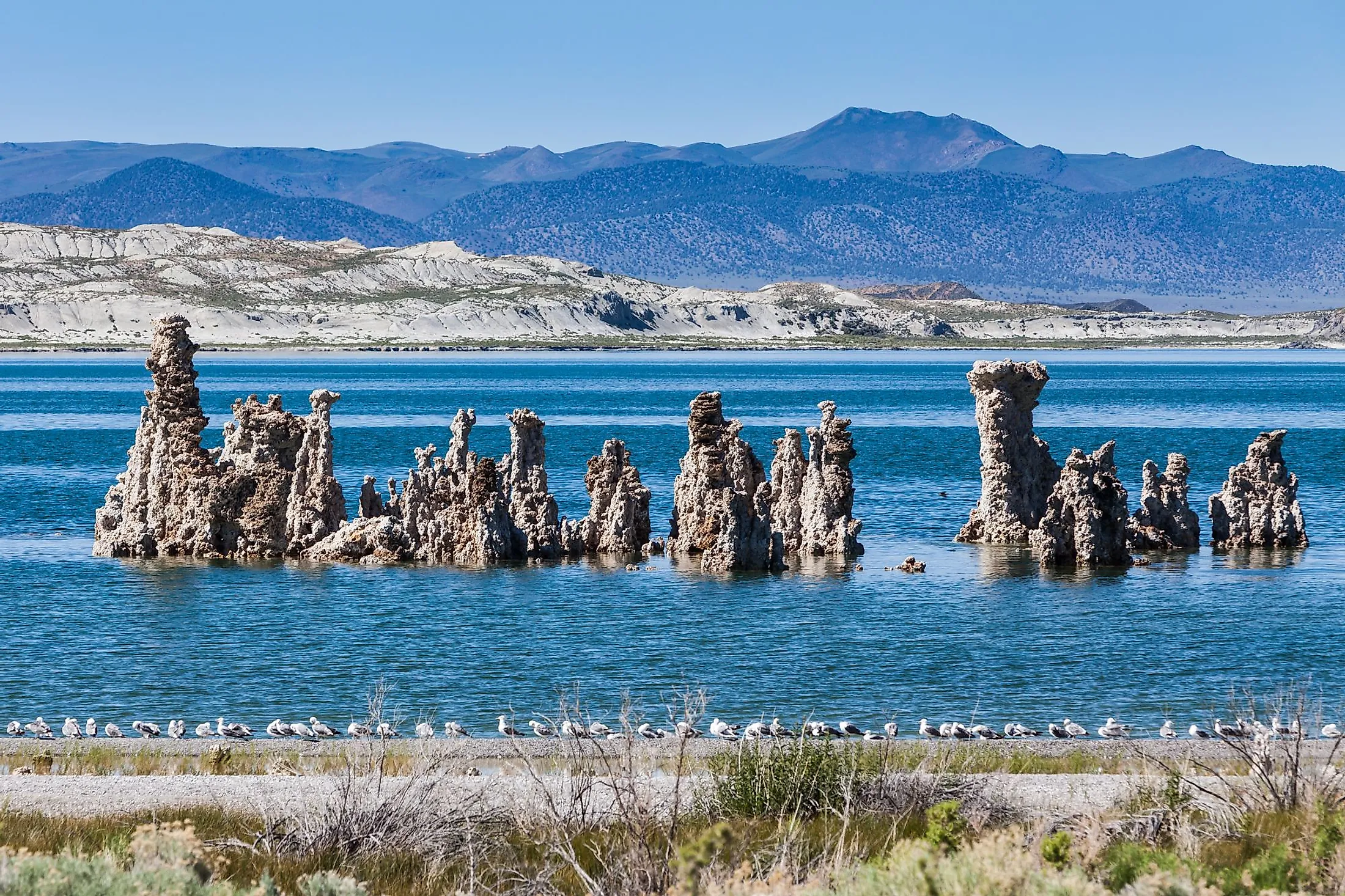
Mono Lake, California
Mono Lake is an alkaline lake situated in Mono County, at the easternmost end of the Sierra Nevada, in California, United States. This saltwater lake was formed as a terminal lake in an endorheic basin around 760,000 years ago. The bizarre tufa towers of Mono Lake that burst up through the lake's alkaline waters are its most unique feature. The lake's productive ecosystem supports various fauna, including several brine shrimps, migratory birds, and alkali flies.
About The Mono Lake
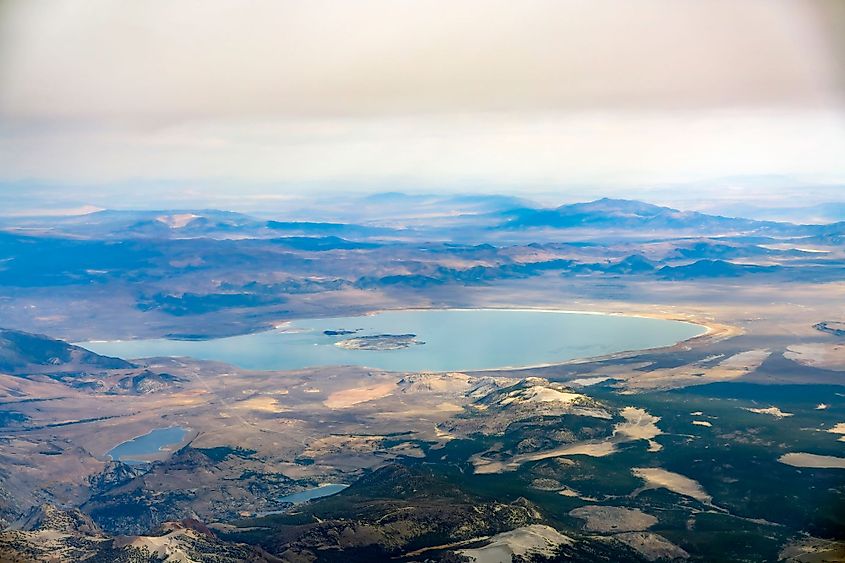
Covering a surface area of 45,133 acres, Mono Lake has a length of 21 km and a maximum width of 15 km. As part of the endorheic Mono Basin, Mono Lake is situated on the boundary between the dry Great Basin and the snow-capped Sierra Nevada mountains at the eastern entrance of Yosemite National Park. As the Mono Basin has no oceanic outlet, the dissolved salts from runoff remain in the lake and increase the pH and salt content of the water. Lee Vining Creek, Rush Creek, and Mill Creek, which travel through Lundy Canyon, are tributaries of Mono Lake.
Mono Lake is one of the continent's oldest lakes, having formed approximately 760,000 years ago in the Long Valley Caldera, a 20-mile-long depression that resulted from a volcanic eruption. Since there was no outlet and only a small inflow throughout the summer and fall, runoff water from the nearby mountains remained trapped in the large endorheic basin and quickly accumulated dissolved salts and calcium. The chemical interaction of the alkaline lake waters and freshwater springs resulted in the formation of towering spires made of solid calcium carbonate. The famous Mono Lake tufa towers were discovered as the lake's shoreline eroded and continues to be a popular tourist attraction.
History Of Mono Lake
The Mono Indian Tribe gave the Mono Lake its name. Yokut, their mother language, defines "Mono" as "fly people." The Mono Basin region was once home to this particular tribe before the mining gold rush. They consumed large quantities of fly larvae, especially the Brine (or alkali) fly, which was also a valuable trading item. Present Mono Reservations are found at Big Pine, Bishop, as well as various locations in the Californian counties of Madera and Fresno. Mono Lake has developed into "one of the most researched areas of the Sierra" due to its extensive natural history, which includes volcanic activity, glacial events, salty waters, and migratory bird pathways.
Wildlife Of Mono Lake
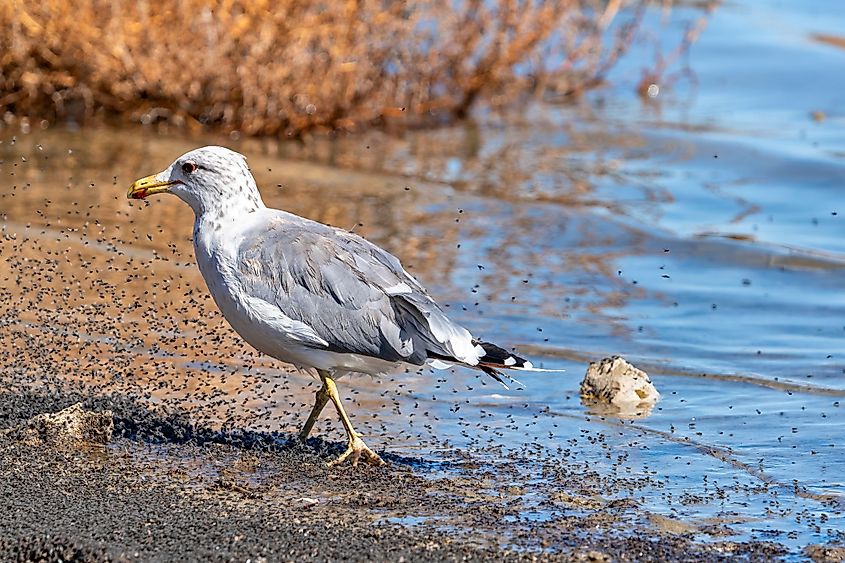
Mono Lake supports a highly productive ecosystem. Each of the 14 ecological zones that make up Mono Lake has its own distinctive flora and fauna. Numerous terrestrial and marine species, as well as several types of flora, are found in the lake and its surroundings. Although Mono Lake lacks fish, it is teeming with alkali flies and trillions of brine shrimp, which support millions of migrating birds who stop by the lake every year. Eared Grebes, Wilson's Phalaropes, and Red-Necked Phalaropes are a few examples of migratory avian species. Mono Lake's rich habitat is also home to various other animals. The rocky Mono Lake shoreline is home to both Mountain Lions and Mule Deer. Coyotes and weasels have also been seen, though they are less common.
Threats To Mono Lake
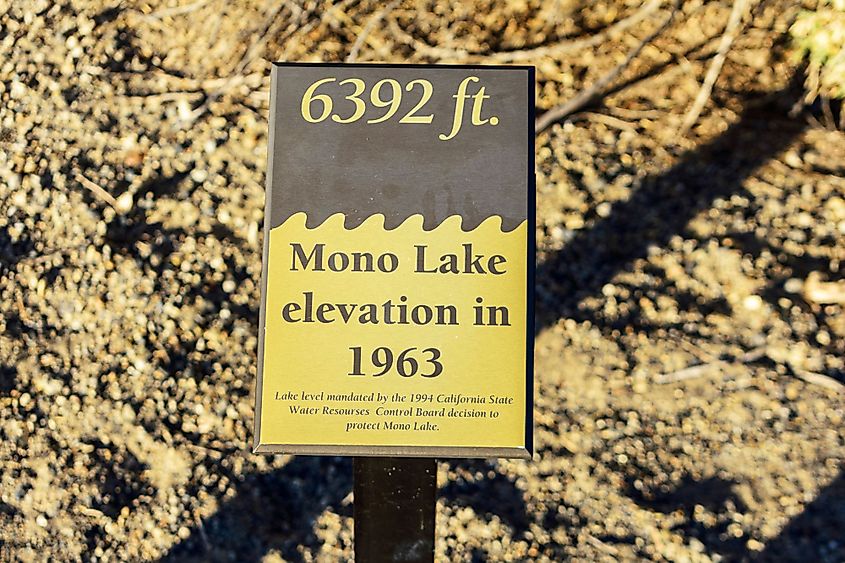
Presently, Mono Lake is experiencing severe drought as a result of climate change. Since 2019, the lake's height has decreased by more than three feet, revealing an additional lakebed. On windy days, dust storms have grown increasingly frequent. The lake's salinity, coastline, and wetlands have been affected for the third year in a row as the snowfall was below average. The landbridge connecting Negit Island to the mainland has expanded, bringing hungry coyotes closer to California Gulls that lay their eggs in the surrounding islets. Mono Lake is now 12 feet below the required lake level of 6392 feet, which would improve lake production, engulf dust-producing regions, and remove the landbridge.
Significant Developments
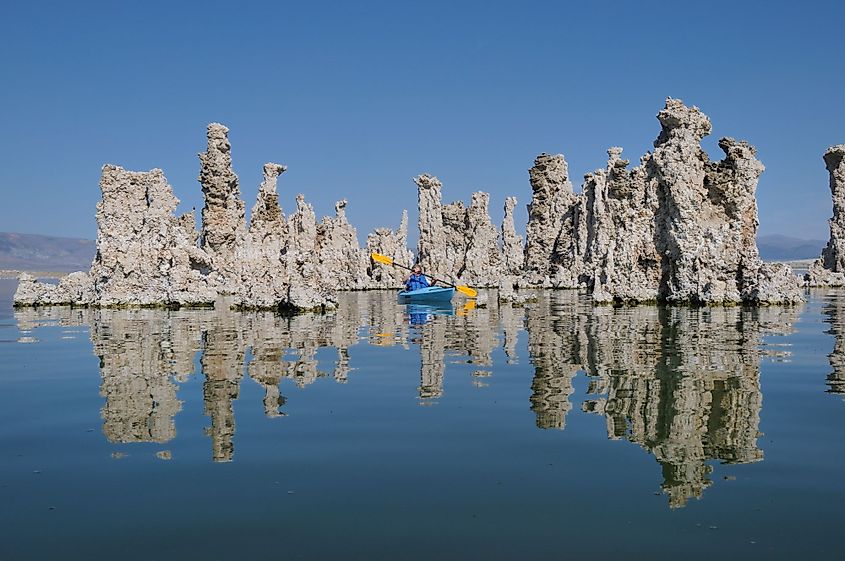
The Mono Lake Committee is a nonprofit organization of concerned citizens, whose goals include preserving and restoring the Mono Basin ecosystem; bringing awareness of Mono Lake and the adverse environmental effects of excessive water use; and encouraging collaborative solutions that help to preserve Mono Lake while addressing legitimate water needs without causing environmental issues in other places. The 16,000-member Mono Lake Committee was established in 1978. Achieving a lake level 6392 feet above sea level is the primary goal of this committee's restoration project.
Mono Lake is a natural wonderland, a paradise for nature lovers, and a haven for outdoor adventurers. This unique lake has the capacity to astound all tourists, no matter which area of Mono Lake one visits. Everyone can find a way to experience this distinctive place, whether it is by kayaking among the tufa towers or strolling along the boardwalks of the South Tufa Area during a sunset.











